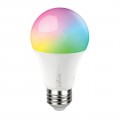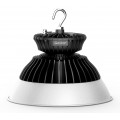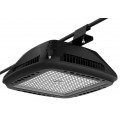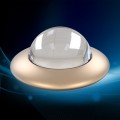Sustainability can be described as "development that meets the needs of the present without sacrificing the ability of future generations to meet their very own needs." Sustainability is a fundamental environmental, economic, and social issue which represents the next natural progression into our evolving lighting standards and practice. Energy consumption, resource conservation, and long-term sustainability are significant challenges that should be addressed for any lighting installation. The direct and indirect costs of electricity require that a lighting system use the bare minimum amount of energy possible to meet up with the task and design requirements.
A good lighting design values both the environment, and energy efficiency. Nonetheless, there are a number other elements of a quality lighting system and the designer really should be cautious to never compromise these other aspects while going after energy efficiency and sustainability, but instead to maintain a harmonious balance. Sustainable lighting is made up of optimizing the use of daylighting, minimizing the consumption of energy through integrated design and effective controls, cutting down light pollution and light trespass, lessening embodied environmental effects, specifying environmentally-preferable materials and equipment, delivering system quality, flexibility, adaptability, maintainability, and durability, and providing for optimal commissioning.
The starting point for sustainable lighting is an energy-efficient system that satisfies the needs of the visual tasks. Fully integrated electric lighting, daylighting, and control systems are main lighting design elements for any building or facility trying to slash its environmental impact. The primary principle of energy efficient lighting is to provide illumination only when and where there is a need, in the quantity it is needed. The quantity needed may just be reduced by effective task and interior design. Environmental and efficiency considerations in selecting a light source system include visual acuity issues for the application, operating costs , disposal expenses , environmentally sensitive areas nearby, together with spectral distribution and/or color temperature. There is more to sustainable lighting than energy efficiency. By using the most efficient sources and luminaires presently available and designing to the lowest illumination levels proposed, huge energy savings can be predicted. Sustainability also includes the effective use of suitable materials, recycling, and disposal processes for any hazardous materials. Sustainable lighting systems are intended to ensure system flexibility and maintainability in an effort to extend the useful life of the facility and to better serve anyone's changing needs.
Optimized performance luminaires in conjunction with sustainable light sources will offer energy savings without compromising the photometric integrity of the application. Lighting controls including adaptive controls, dimming, part-night photo controls, motion sensors, and energy management systems alone can save considerable amounts of energy and help reduce light pollution. Lighting controls are also able to ensure that lighting is readily available when it is needed. While reducing input power reduces one element of the energy equation, implementing effective lighting controls affects the rest - which is, the time a system operates. Addressable intelligent controls deliver the greatest potential for energy savings, peak demand reduction, maintenance savings, and reduction in light pollution. These control systems can independently address each luminaire, and provide multi-way communication channels which enable dimming level scheduling. Centralized light control systems provide an effective way to combine several lighting control strategies, for example occupancy sensors, daylight harvesting, photocells, or time schedules; additionally, centralized systems are employed to control lighting loads for much larger areas where local occupancy sensors are problematic.
For sustainable designs, daylight is highly recommended as the primary light source whenever it is available. Daylighting can often counterbalance the electric lighting demand and improve the effectiveness of the building project. Daylight will offer energy savings if the electric lighting system may be controlled to reap the benefits of its availability. Daylighting can impact people and spaces by offering sensory availability, connection to nature, time, weather information, full-spectrum light, modeling, along with an indirect component of light producing wall and ceiling-washing effects for an enjoyable and comfortable visual environment. Appropriate application of daylighting is essential to ensure that spaces receive adequate illumination in a way that occupants are satisfied and do not seek modifications or de-activation of the control. When designing electric lighting in a space receiving sufficient daylight, make certain that the luminaires place light on the same surfaces and in a corresponding direction as the daylight apertures. Electric lighting illumination on surfaces alongside daylight apertures can help to eliminate contrast and improve visual comfort. The requirement for compensatory lighting should be limited and can be averted by means of proper daylighting design that provides adequate fill light. Daylight harvesting may be applied using a manual, automatic or combination control strategy.
The lighting design should anticipate modification and be engineered to be durable enough to survive system reconfiguration and reuse in future remodeling. The lighting system should be designed to make certain that maintenance cost can be held to a reasonable value. If access to the luminaires is difficult, it is most cost-effective to change lighting fixtures on a group replacement basis. The cost of replacing lamps in high mast luminaires can be very high, thus, long-Iife lamps should be used.




















































